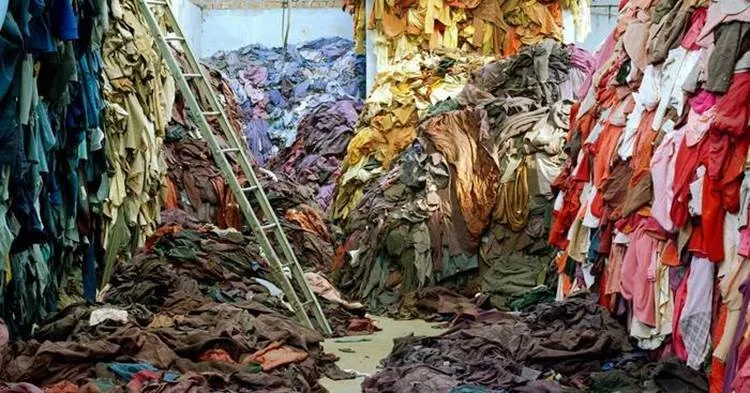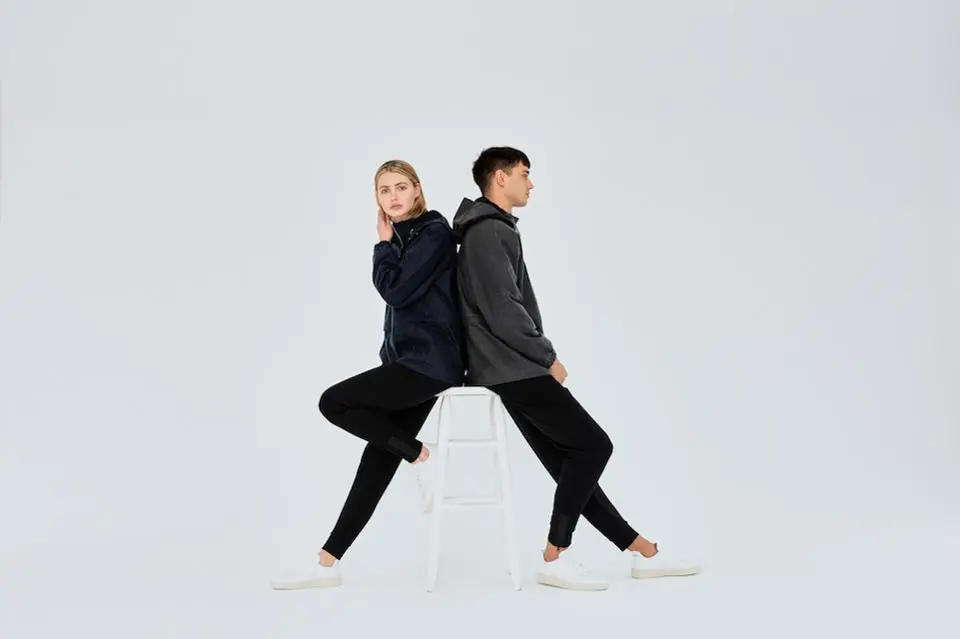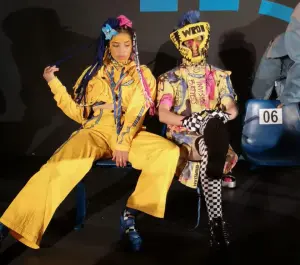- info@globalfashionstylist.com
- +39 351 934 3984
- Milan, Italy
- WA Business +39 351 934 3984
Eco News
The 300,000 tonnes of clothes dumped in landfills each year have prompted protests against waste in the fashion industry

How can consumers be more sustainable?
Recycle, Exchange, Shop Secondhand
Second Hand September. "In that month, you might just think a bit differently about how you would normally shop... `{"it is` }` a period of time to consider what you're buying and what you're consuming and why: what do you really want; what do you really need?"
The UK model Stella Tennant explains why she is joining forces with Oxfam for Second Hand September - a campaign that aims to reduce the environmental impact
of fast fashion
Think about Fabrics...Cottons & Polyester
Problem with Polyester
Polyester menace
One washload of polyester clothes can release 700,000 microplastic fibers into the environment. It is estimated that half a million tonnes of these microfibres end up in the sea each year. Polyester, made from fossil fuels, is non-biodegradable. Microfibres from synthetics are a major contributor to microplastic pollution - a 2019 Bangor University survey of UK rivers, reservoirs and lakes found microplastic pollution at all locations tested.. Our wardrobes are also dominated by cotton, a thirsty crop saturated in pesticides, that uses a high consumption of water. sticides are washed out of soils, and pollute rivers and groundwater. Pests often develop resistance to pesticides that are used on a continuous basis.Get to know your closet and the brands you support
Understand your bodyshape and what styles suit you...
Know your wardrobe and rethink everything.... Practice reading and knowing the brands behind the fashion spontaneous cheap fast fashion sales end up polluting our planetRecycle, Exchange, Shop Secondhand
Second Hand September. “In that month, you might just think a bit differently about how you would normally shop… `{“it is` }` a period of time to consider what you’re buying and what you’re consuming and why: what do you really want; what do you really need?” The UK model Stella Tennant explains why she is joining forces with Oxfam for Second Hand September – a campaign that aims to reduce the environmental impact of fast fashion
Think about Fabrics...Cottons & Polyester
Problem with Polyester
Polyester menace
One washload of polyester clothes can release 700,000 microplastic fibers into the environment. It is estimated that half a million tonnes of these microfibres end up in the sea each year. Polyester, made from fossil fuels, is non-biodegradable. Microfibres from synthetics are a major contributor to microplastic pollution – a 2019 Bangor University survey of UK rivers, reservoirs and lakes found microplastic pollution at all locations tested.. Our wardrobes are also dominated by cotton, a thirsty crop saturated in pesticides, that uses a high consumption of water. sticides are washed out of soils, and pollute rivers and groundwater. Pests often develop resistance to pesticides that are used on a continuous basis.Get to know your closet and the brands you support
Understand your bodyshape and what styles suit you…
Know your wardrobe and rethink everything…. Practice reading and knowing the brands behind the fashion spontaneous cheap fast fashion sales end up polluting our planet
TREAT YOURSELF
Buy something that is great quality that will last !! Buy One good quality coat instead of 5 cheap ones!
THINK FRUITY FABRICS
*Pineapple Leather: Created by The Spanish brand Piñatex : a square metre of pineapple leather uses 480 waste pineapple leaves and is half the cost of traditional cow leather (and, its proponents claim, comes at a fraction of the environmental cost of raising livestock).
*Banana Silk: Originally from Phillipines, but mostly used in India.Derived from Waste Product.
*Pineapple Leather: Created by The Spanish brand Piñatex : a square metre of pineapple leather uses 480 waste pineapple leaves and is half the cost of traditional cow leather (and, its proponents claim, comes at a fraction of the environmental cost of raising livestock).
*Banana Silk: Originally from Phillipines, but mostly used in India.Derived from Waste Product.
*Cactus Leather: Vegan Leather Desserto.Two entrepreneurs from Mexico have worked to find a leather alternative that is not only eco-friendly but has the look and feel of real leather. The cactus is known for its rugged, thick skin, which makes it the perfect texture to simulate animal leather.
*Citrus Waste: Italian Brand OrangeFiber has produced a patented material from citrus juice byproducts, repurposing them to create beautiful, sensorial materials.The fabrics are formed from a silk-like cellulose yarn that can blend with other materials. When used in its purest form, the resulting 100% citrus textile features a soft and silky hand-feel, lightweight, and can be opaque or shiny according to production needs.Salvatore Ferragamo is the first fashion house to employ Orange Fiber fabrics.
*Coconut Fabric: Cocona is made using activated carbons derived from coconut shells and volcanic sands- both waste products from the food and water filter industries.Developed from a company in Colarado.

FutureCraft. Loop, a 100% recyclable shoe coming in 2021, is just one way Adidas is focusing on eco- friendliness.
SUSTAINABLE FASHION BRANDS MAKING A STAND
VIN + OMI

According to Vin+Omi, “fast fashion has had its day and fashion companies that ignore the planet have had their day.” Since 2004, Vin+Omi have developed twenty new textiles and a meeting with Prince Charles led to the designers transforming the Prince’s nettle plants from Highgrove Estate into woven material. Garments made from this new fabric and colored with plant dyes were featured in their runway show this month. Recycled plastic waste from art supplies company Daler Rowney was turned into fabric for their printed outfits. Also on show were colorful bags made from discarded vinyl outdoor advertising posters donated by Ocean Outdoor.
Riley Studio

Riley Studio is a new sustainable unisex lounge wear brand with fabrics made from upcycled waste products like ocean plastic and fishing nets plus natural fibres. They’re made to last a lifetime, not just for one season, so you can see and feel the quality in their garments. A standout item are the super soft track pants, which come in black or red. Made from Q-NOVA® by Fulgar recycled nylon, these track pants are created using yarn discards from Fulgar’s production cycle, which normally would have been thrown away. The zips at each ankle, plus the weight and feel of the fabric make for a loungewear rather than leisurewear look and a travel wardrobe staple. Riley Studio will have a concept store in London this October with likeminded sustainable brands such as By Sarah, Frank Green and REN at 79 – 81 Ledbury Road, Notting Hill. The Concept Store will also offer a Clothes Drop in partnership with Stories Behind Things, so that customers can donate old clothes to their Clothes Switching Events.
DB Berdan

Founded in Istanbul, DB BERDAN is a super creative, edgy London-based streetwear and clubwear genderless brand by mother and daughter duo Beg Berdan and Deniz Berdan. The brand uses its own prints to tell stories, with a focus on social justice and underground cultures. When Pride was banned in Istanbul, they brought it to the catwalk of the city’s Mercedes-Benz Fashion Week. The SS20 collection called “Self Love Club” in collaboration with The Smiley Company, features bold colors and silhouettes from late 1980s and early 1990s hip hop and rave cultures. The brand’s sustainable credentials are good with their use of organic cotton and environmentally friendly dyes. Plus their garments often double as two pieces. Oversized tie dye denim hoodies and track pants turn into shorts while basketball shorts that become skirts. And on the outside of each garment are labels with the suggestion “take care of our Planet, wash less, wash cold, line dry donate or recycle.”

 Be Empowered
Be Empowered